Batteries
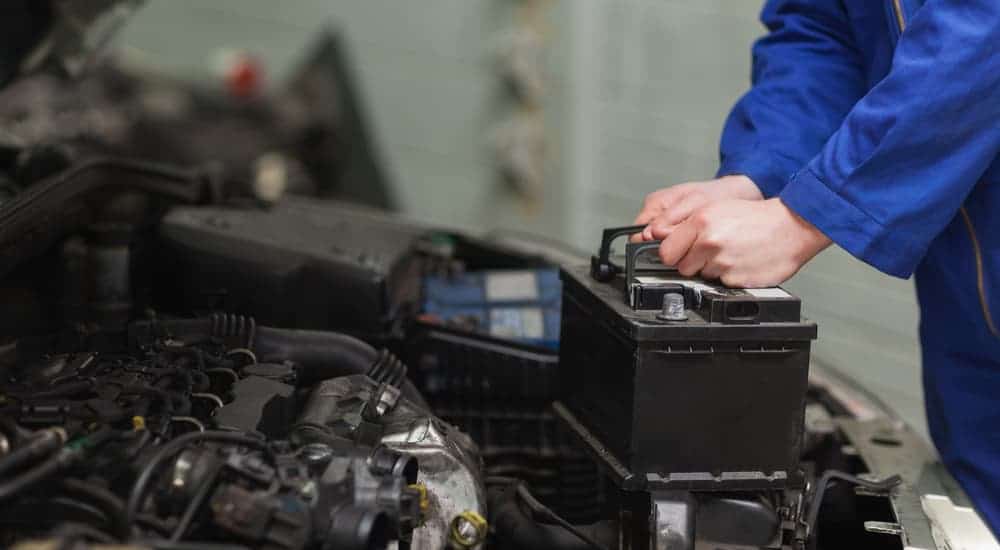 Vehicles are very complex and amazing pieces of machinery that rely on a large number of different parts and components working together in harmony. In order for a vehicle to achieve movement, these all need to be working proficiently. However, there are some parts that are more vital than others, which can render a car unmovable if they alone are inoperable. One of these vital parts is your car battery and is required for a number of different things, mainly turning the vehicle on.
The battery is primarily used by the vehicle’s starter, which activates the engine. Once the engine is on and running, the vehicle’s alternator is what produces power for the vehicle, and the battery naturally recharges itself. However, the battery can be used while the engine is off to operate components like the radio and lights. This drains the battery of power, and if used for too long without turning the engine on, the battery can lose all power, which would require the battery to be recharged.
Typically, a car battery should last you anywhere from 2-5 years depending on a wide variety of conditions such as use, climate, driving distances, etc. With so many different factors to consider, it can be difficult for the average car owner to know just how healthy their car battery is. Luckily, there are a few different tips and tricks that you can learn in order to maximize the life of your battery, and avoid a premature car battery replacement.
Vehicles are very complex and amazing pieces of machinery that rely on a large number of different parts and components working together in harmony. In order for a vehicle to achieve movement, these all need to be working proficiently. However, there are some parts that are more vital than others, which can render a car unmovable if they alone are inoperable. One of these vital parts is your car battery and is required for a number of different things, mainly turning the vehicle on.
The battery is primarily used by the vehicle’s starter, which activates the engine. Once the engine is on and running, the vehicle’s alternator is what produces power for the vehicle, and the battery naturally recharges itself. However, the battery can be used while the engine is off to operate components like the radio and lights. This drains the battery of power, and if used for too long without turning the engine on, the battery can lose all power, which would require the battery to be recharged.
Typically, a car battery should last you anywhere from 2-5 years depending on a wide variety of conditions such as use, climate, driving distances, etc. With so many different factors to consider, it can be difficult for the average car owner to know just how healthy their car battery is. Luckily, there are a few different tips and tricks that you can learn in order to maximize the life of your battery, and avoid a premature car battery replacement. Coupons and Offers
$199.95 Off
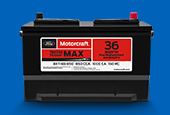
Motorcraft® Tested Tough® MAX Batteries, starting at $199.95 MSRP, or redeem 40,000 FordPass® Rewards Points. *
Valid through 12/31/2025
View CouponOnly $149.95
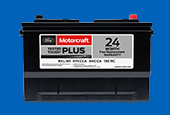
Motorcraft® Tested Tough® PLUS Batteries, $149.95 MSRP, or redeem 30,000 FordPass® Rewards Points. *
Valid through 12/31/2025
View Coupon
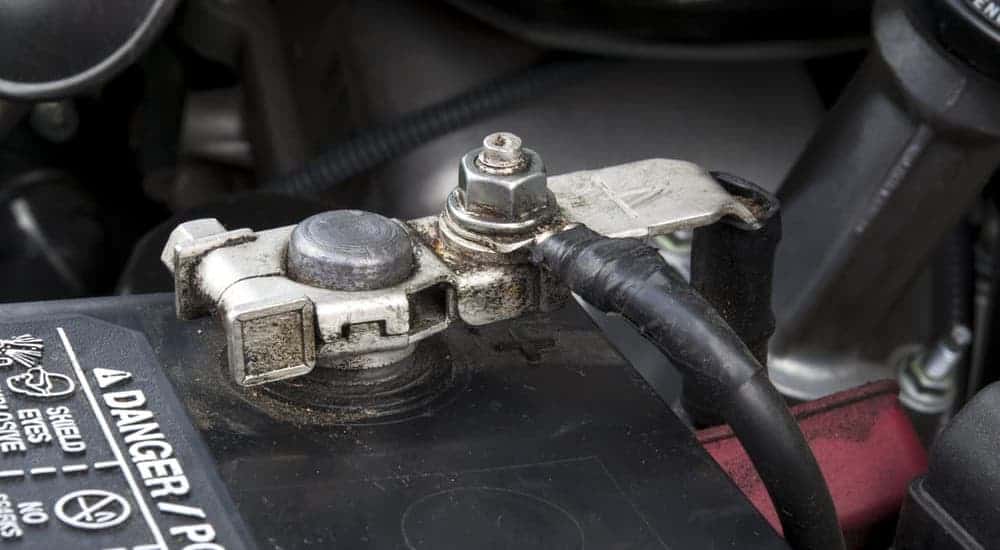 The anode and the cathode, which are the negative and positive ends of the battery, respectively, are hooked up to an electrical circuit. This causes a chemical reaction to occur inside of the battery, which creates a buildup of electrons in the anode. This, in turn, creates an electrical imbalance in the battery. As more and more electrons build up, they begin to overflow.
Due to the nature of electrons, they repel each other and will seek out the area that has the fewest electrons in it. In a battery, the only place for the electrons to go is the cathode. However, due to the battery’s electrolyte, the electrons are unable to go directly to the battery’s cathode.
The electrolyte will only allow the electrons to flow to the cathode if the battery is connected to a closed circuit, meaning that there is an electrical wire connecting to both the cathode and the anode. When the circuit is closed, the electrons are able to flow to the cathode and through to the electrical component that is connected, supplying it with electricity.
However, over time, the electrochemical processes that occur in batteries change their very chemical composition, making them unable to produce electrons. This, in turn, renders the battery useless and is why batteries have a limited lifetime. When you recharge a battery, you are changing the direction of the flow of electrons in the battery using an outside power source. This causes the electrochemical process to happen reverse, which will eventually allow the battery to return to full power.
Car batteries operate very similarly to standard batteries, only on a much larger scale. They rely on a lead-acid reaction to occur and are considered SLI batteries, which stands for starting, lighting, and ignition. These batteries excel in supplying quick and powerful spurts of energy, which is very useful when it comes to starting the engine, as well as the lights and accessories.
Once the engine is running, the alternator takes over and supplies power for the vehicle. Most car batteries are 12-volt batteries, which have six cells that contain two plates each, totaling 12 plates. These plates are submerged in sulfuric acid, which causes a chemical reaction between the two plates, ultimately resulting in the production of electrons. These electrons then race around the plates, which creates electricity. This electricity then flows from the battery into places like the engine, the lights, and the radio. Unlike standard batteries, car batteries are able to recharge while the vehicle’s engine is running, giving them a much longer lifespan.
The anode and the cathode, which are the negative and positive ends of the battery, respectively, are hooked up to an electrical circuit. This causes a chemical reaction to occur inside of the battery, which creates a buildup of electrons in the anode. This, in turn, creates an electrical imbalance in the battery. As more and more electrons build up, they begin to overflow.
Due to the nature of electrons, they repel each other and will seek out the area that has the fewest electrons in it. In a battery, the only place for the electrons to go is the cathode. However, due to the battery’s electrolyte, the electrons are unable to go directly to the battery’s cathode.
The electrolyte will only allow the electrons to flow to the cathode if the battery is connected to a closed circuit, meaning that there is an electrical wire connecting to both the cathode and the anode. When the circuit is closed, the electrons are able to flow to the cathode and through to the electrical component that is connected, supplying it with electricity.
However, over time, the electrochemical processes that occur in batteries change their very chemical composition, making them unable to produce electrons. This, in turn, renders the battery useless and is why batteries have a limited lifetime. When you recharge a battery, you are changing the direction of the flow of electrons in the battery using an outside power source. This causes the electrochemical process to happen reverse, which will eventually allow the battery to return to full power.
Car batteries operate very similarly to standard batteries, only on a much larger scale. They rely on a lead-acid reaction to occur and are considered SLI batteries, which stands for starting, lighting, and ignition. These batteries excel in supplying quick and powerful spurts of energy, which is very useful when it comes to starting the engine, as well as the lights and accessories.
Once the engine is running, the alternator takes over and supplies power for the vehicle. Most car batteries are 12-volt batteries, which have six cells that contain two plates each, totaling 12 plates. These plates are submerged in sulfuric acid, which causes a chemical reaction between the two plates, ultimately resulting in the production of electrons. These electrons then race around the plates, which creates electricity. This electricity then flows from the battery into places like the engine, the lights, and the radio. Unlike standard batteries, car batteries are able to recharge while the vehicle’s engine is running, giving them a much longer lifespan.
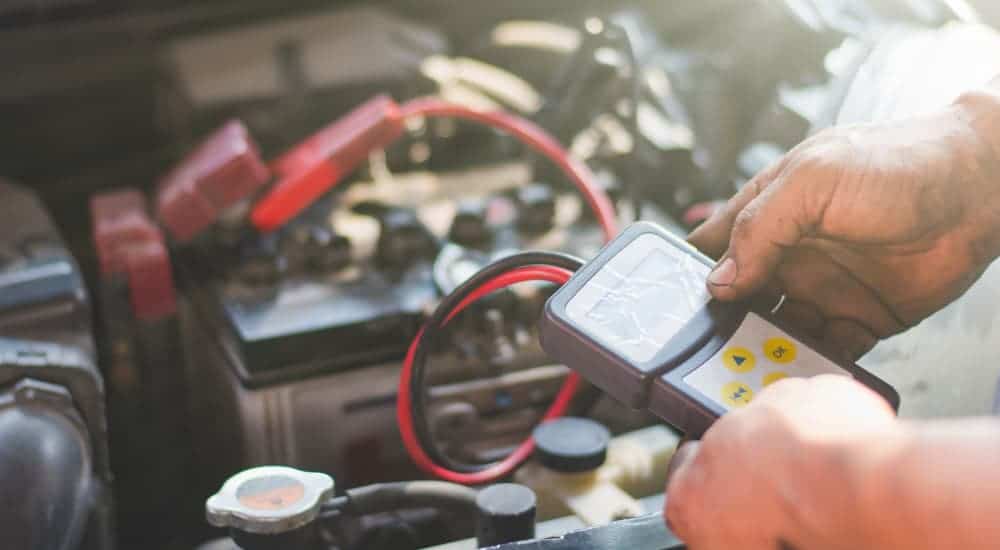 Limit usage while the engine is off: While the car battery can be used to power things like the lights and the radio while the engine is off, this drains the battery without a source to recharge it. Over time, this can lead to the battery dying. By limiting the drain on the battery, you extend its life.
Care for the whole vehicle: Vehicles require a multitude of different parts that work together to make it work, including the battery. By taking your vehicle in for regular checks and tune-ups, you can ensure that not only is your battery healthy, but so is the rest of the vehicle.
When it comes to car/truck/SUV maintenance, here in Cincinnati, Kings Ford is the premier place to bring your vehicle. Kings Ford Quick Lane is excellent for not only a checkup, but also a car battery replacement should you find it necessary. Our expertly trained staff will be able to aid you with anything you need, whether it be battery servicing, an oil change, or any other questions and concerns. Our technicians are familiar with all kinds of vehicles and will be able to detect any potential issues. Here at Kings Ford, we are the premier place to go for any of your automotive needs.
Limit usage while the engine is off: While the car battery can be used to power things like the lights and the radio while the engine is off, this drains the battery without a source to recharge it. Over time, this can lead to the battery dying. By limiting the drain on the battery, you extend its life.
Care for the whole vehicle: Vehicles require a multitude of different parts that work together to make it work, including the battery. By taking your vehicle in for regular checks and tune-ups, you can ensure that not only is your battery healthy, but so is the rest of the vehicle.
When it comes to car/truck/SUV maintenance, here in Cincinnati, Kings Ford is the premier place to bring your vehicle. Kings Ford Quick Lane is excellent for not only a checkup, but also a car battery replacement should you find it necessary. Our expertly trained staff will be able to aid you with anything you need, whether it be battery servicing, an oil change, or any other questions and concerns. Our technicians are familiar with all kinds of vehicles and will be able to detect any potential issues. Here at Kings Ford, we are the premier place to go for any of your automotive needs.